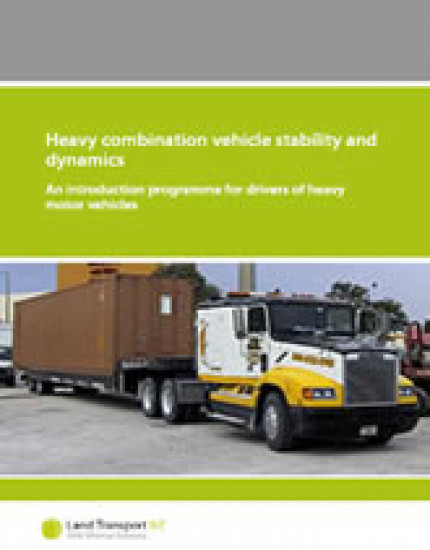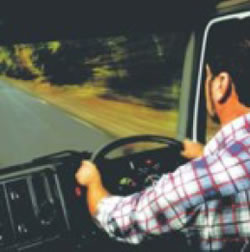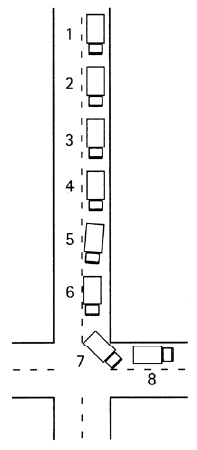An introduction programme for drivers of heavy motor vehicles


It is important to have two hands on the steering wheel whenever it is possible. This applies not only during turns and cornering but also when travelling on straight roads. A driver who adopts a relaxed, twohanded steering style responds more readily to normal vehicle movement than one who consistently leaves one hand off the wheel.
The effects on vehicle handling that occur as a result of the steering actions of the driver must not be underestimated, particularly by those who operate vehicles carrying high-CG loads.
When negotiating intersections, roundabouts and other potential hazards, such as road works, railway crossings and crash sites, it's important to control the vehicle's speed and side-cornering forces before entering the site.
Drivers who use the system of vehicle control will be concentrating on potential trouble spots, not on the brakes and gear lever.
While the system of vehicle control does take some getting used to, once perfected it produces an unrushed, deliberate and safe driving style that reduces the risks, particularly at intersections and even more so at roundabouts, where these changes in direction can occur, and vehicles carrying high-CG or ‘live’ loads often come to grief. In these situations the combination of road camber and running trailer wheels onto kerbs can make the stability problems even worse. The system of vehicle control is explained below.

1 Course
2 Mirrors
3 Signal
4 Brake
5 Gears
6 Mirrors
7 Execute
8 Accelerate
A very cautious and planned approach to corners is always necessary.